When normal forestry practices don’t cut it: With a light-on-the-land touch, specialized arborists are cleaning up Jasper’s burn debris
It’s a widely-accepted mystery: whether or not a tree that falls in the forest makes a sound.
But what about the riddle that Jasper National Park officials were faced with last year: If hundreds of thousands of burned trees are down in high visitor use areas, who clears them away?
The answer, my friend, is blowing in the wind(y city).
Since the Jasper Wildfire Complex razed 33,000 ha of Jasper’s forests last July, Lethbridge’s Adam Ross and his team of arborists, foresters, danger tree specialists and wildlife tree assessors, have been cutting, pruning, clearing, mulching, sawing, chipping and generally making passable the area’s roads, right-of-ways and trails.
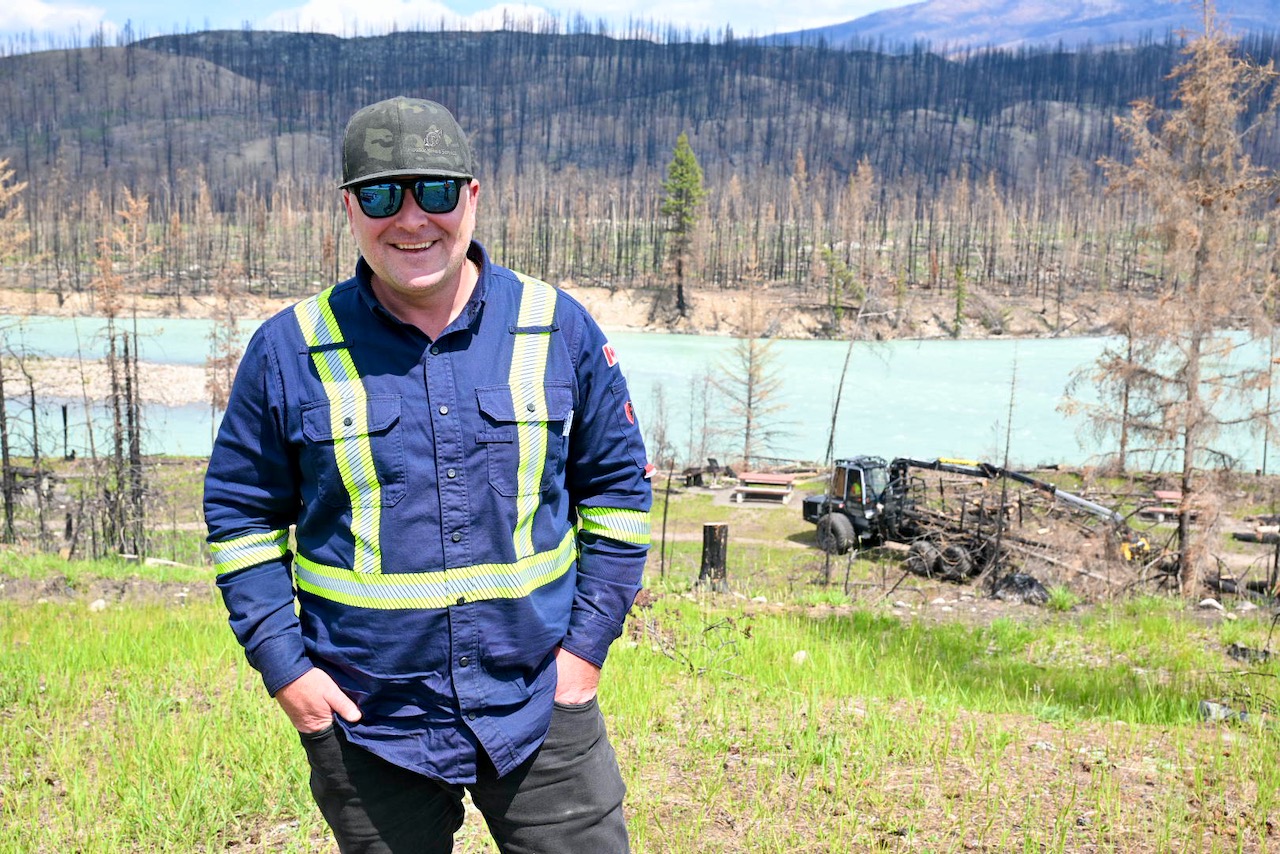
“Bush surgeons, that’s who we are,” says Ross, who owns and operates Rossco’s Tree Service.
Ross’ company has been contracted to clear all of Jasper’s campgrounds, day-use areas and roadways impacted by the fire.
The enormity of the crews’ task is difficult to put into perspective, and not just because of the sheer volume of trees to be cleared.
“Because this work happens in closed areas, not many people understand the massive cleanup required to make roads, campgrounds, trails, and day-use areas in fire-affected areas safe,” says trails advocate and social media sleuth, Loni Klettl.
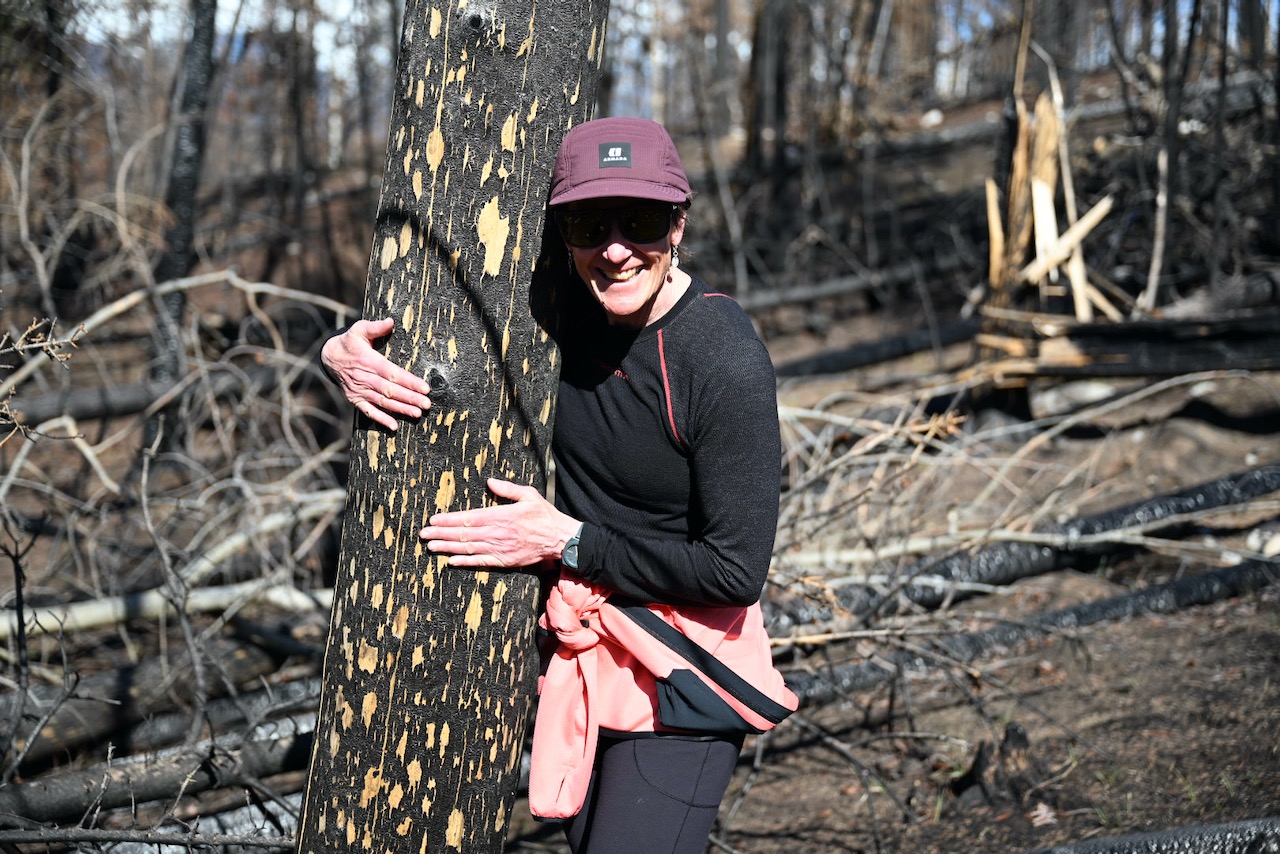
“It’s a juggling act,” Ross agrees. “You have to consider how much you leave in tact for wildlife, for birds, for visitor safety, and for ground disturbance. All of these things need to be weighed out.”
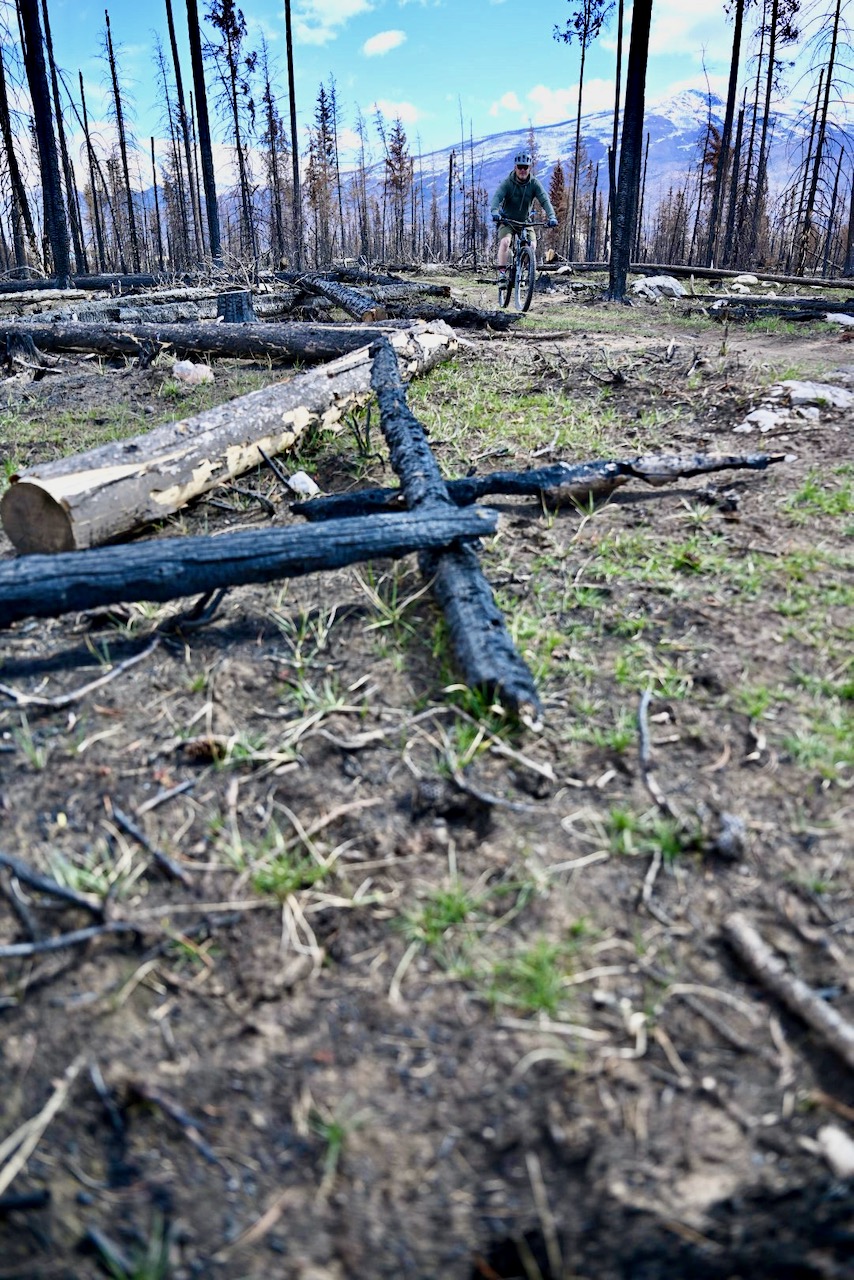
Informing the team’s judgement is their wealth of experience. In 2006, on B.C.’s south coast, Ross was brought in to help following severe windstorms, when rain and 150 km/h winds ripped out thousands of trees and cut off power to more than 250,000 homes. He was among those helping City of Calgary officials remove thousands of trees after “Snowtember” in 2014. And most relevant to the Jasper situation, Ross’ crew led the charge to clean up after the 2017 Kenow Wildfire in Waterton Lakes National Park, where, because of the ecological sensitivity of the area, their mandate was to maintain a low-to-zero ground disturbance.
“We had to approach things differently,” Ross remembers. “We needed to operate with a light hand on the land.”
In other words, conventional forestry equipment and practices weren’t going to cut it.
When they were brought to Jasper last year, the same principles applied—although the scale of the project here was much larger than anything they’d worked on previously.

“This is probably one of the lagest hazard tree removal contracts ever signed, with the prescription of needing a light touch,” Ross says.
To reduce soil disturbances and erosion; retain valuable habitat features for birds and other wildlife; and promote growth of the remaining trees and understory, Ross’ team uses specialized machinery—low-impact, high-volume harvesting equipment which can navigate sensitive habitat while felling, limbing, and cutting.
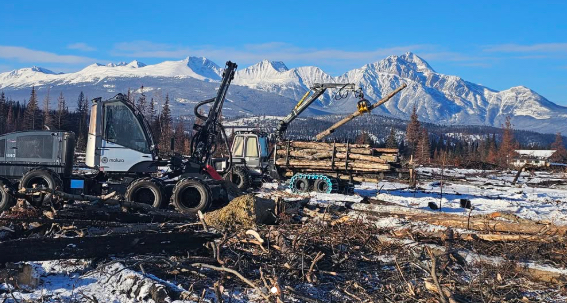
Post-harvest, the crews have been making use of another high-tech forestry product: biochar incinerators. These machines incinerate wood waste up to 40 times faster than traditional methods, and are touted as reducing smoke and particulate emissions, not to mention turning wood waste into energy.
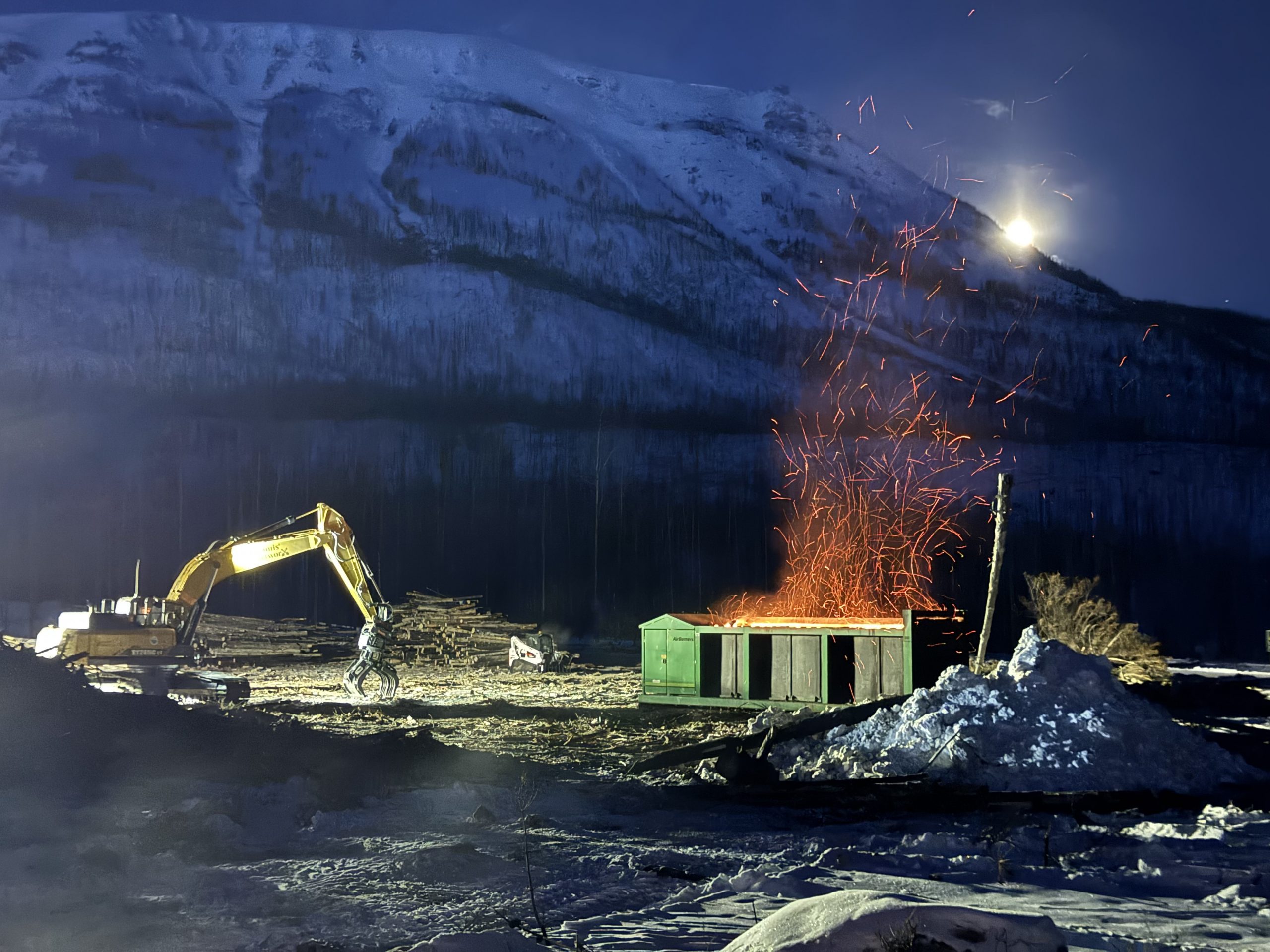
To reduce ground disturbance, Rossco Tree Service has been extending its reach with the help of Manitou Machines—all-terrain telehandlers designed to reach high places, making them ideal for tree pruning, trimming, or tree removal from distance.
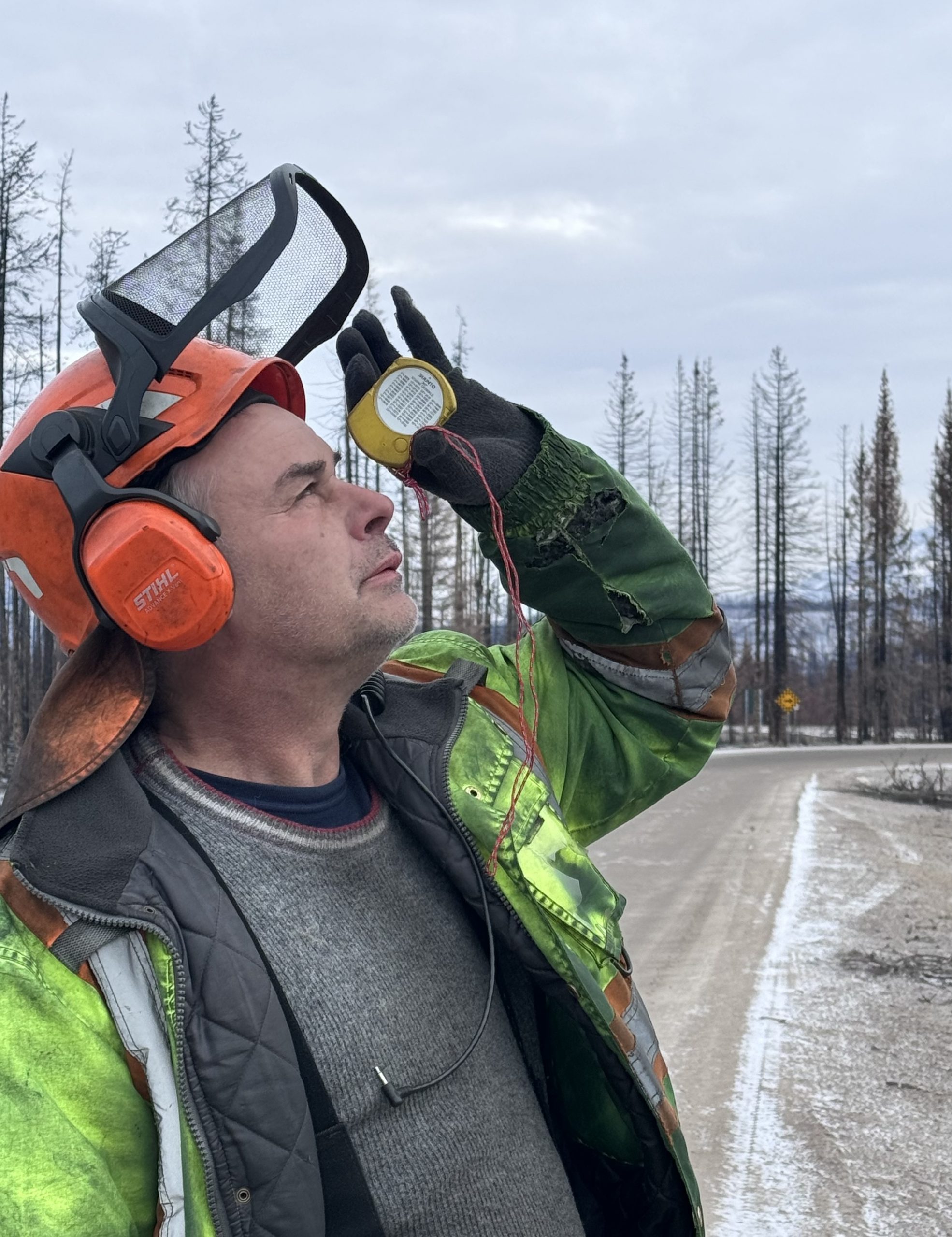
Clearing is often done from a hard surface. On roadways, trails or around other infrastructure, crews measure with a clinometre the exact length of the tree or branch to be cut.
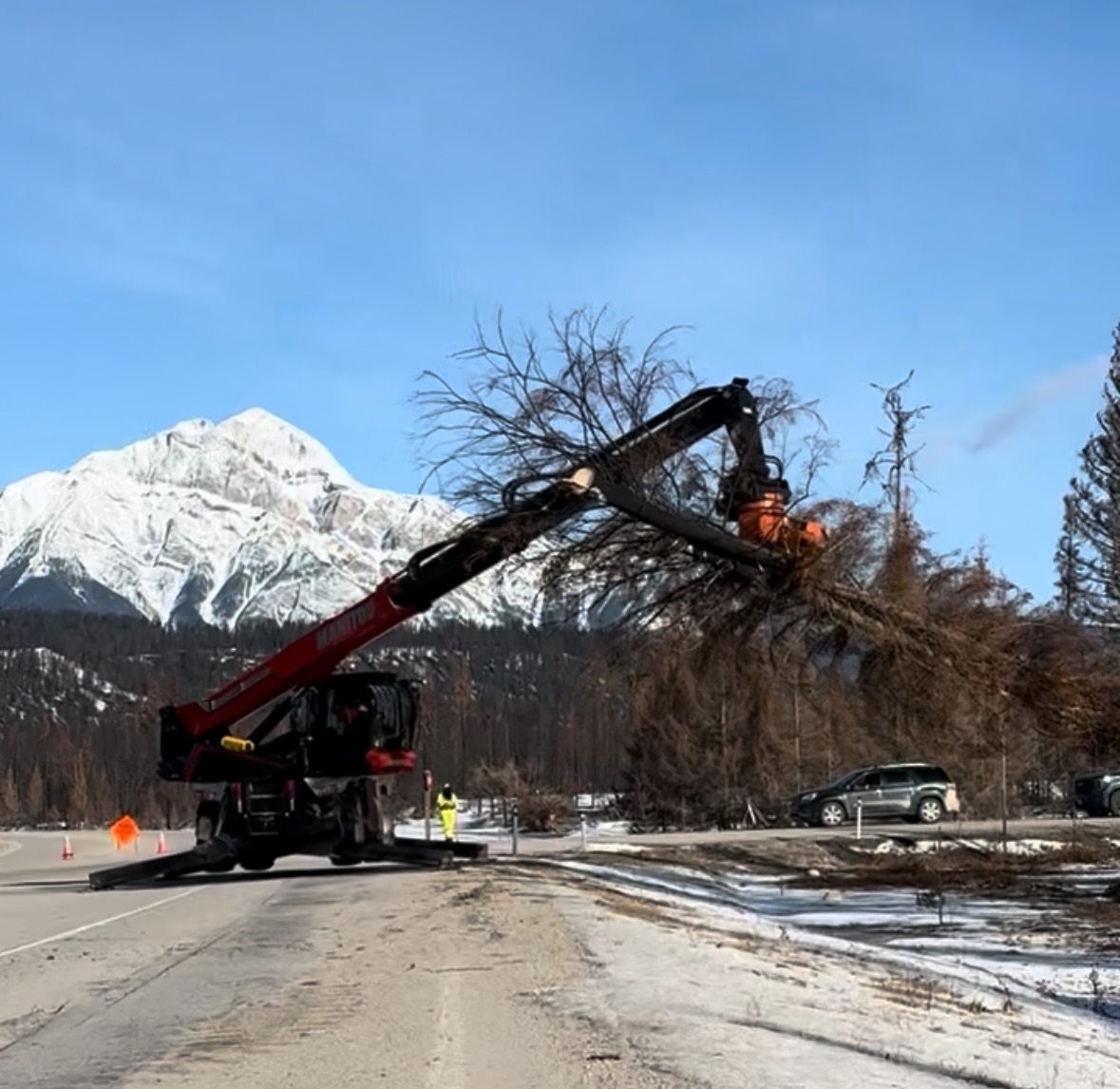
“You have to be able to say ‘that tree is not going to hit that road, or tent pad,’ but still be able to retain as much as you can,” he says.
Rossco’s Tree Service has helped clean up hundreds of thousands of hazard trees along Highways 93 and 93A, in Whistlers’ and Wapiti Campgrounds, around Lake Annette, Lake Edith and other day use areas. However, some locations in Jasper National Park remain closed. The Valley of the Five Lakes trail, Mount Edith Cavell day use area and Maligne Canyon are the most prominent on the list of closures.
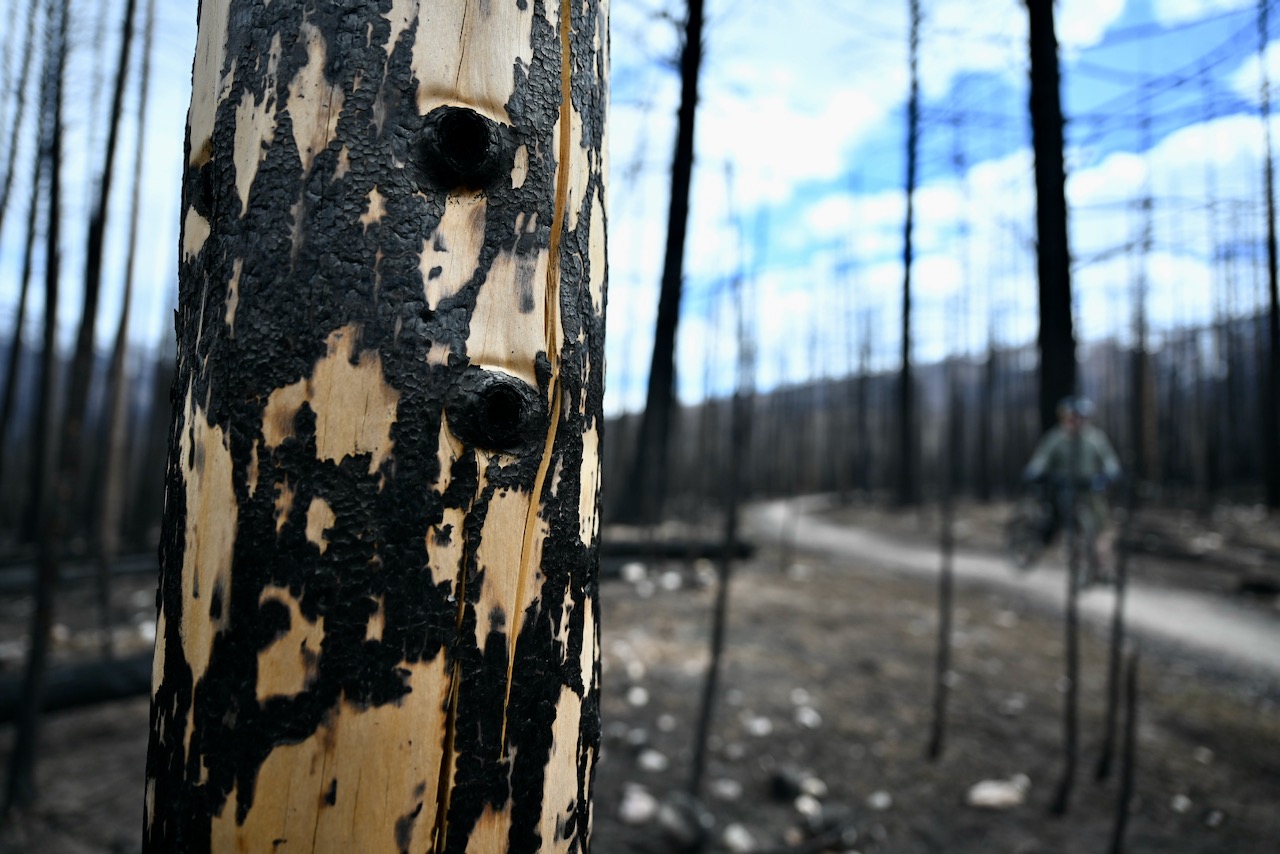
Parks Canada has said that these closures are in areas that involve significant slopes and or/roadways and that they remain to ensure public safety, slope stability and roadway safety standards are met.
“We understand how special these areas are to our community and visitors and we’re committed to restoring safe access,” the agency said on June 26.
In that same memo, Parks Canada also said next steps involve hazardous tree removal, detailed geotechnical analysis, and infrastructure design, engineering and rebuild. More detailed information is available on the Parks Canada website.
“Parks Canada is working with technical experts and will engage stakeholders as appropriate as we focus on restoring access, and ultimately, building for Jasper National Park’s future.”
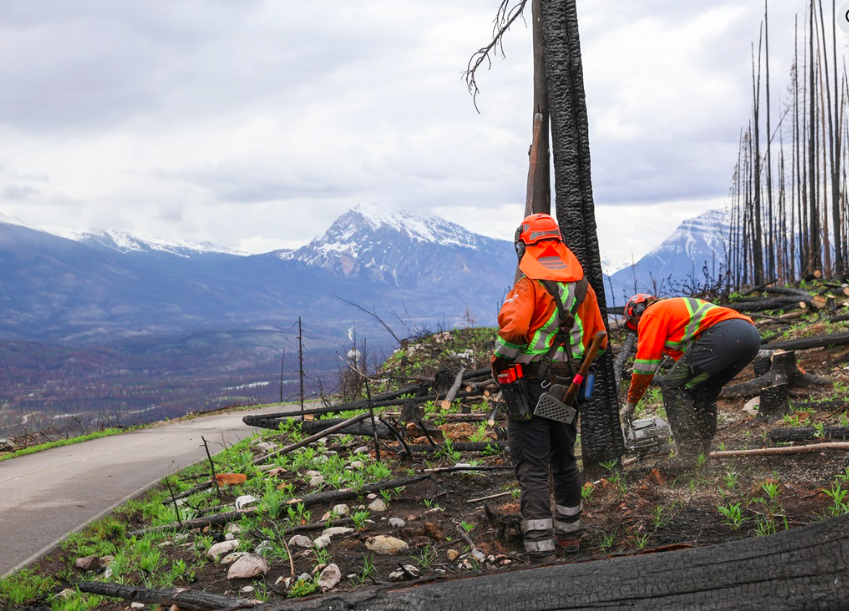
Ross, for his part, agrees with the measured approach. He says he understands that people are anxious to get on their favourite trails, but says that it’s not a simple matter to declare these areas safe again.
“You can’t rush these things,” he says. “There’s so much complexity involved.”

Moreover, he says that patience will be a virtue when it comes to taking in the landscape. In Waterton, he says, the regeneration of the forest has been stunning, and in time, so it will be in Jasper.
“Four years from now you won’t even know we were here,” he says.
Bob Covey // bob@thejasperlocal.com


